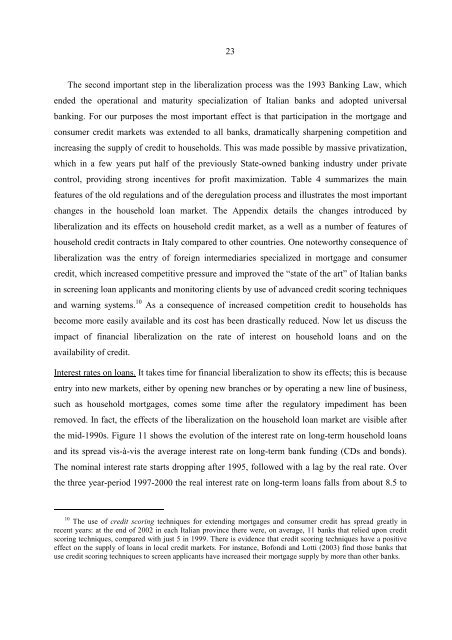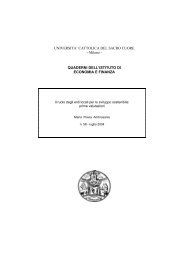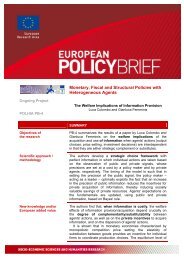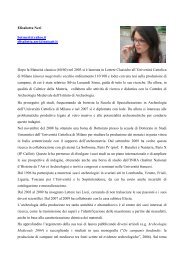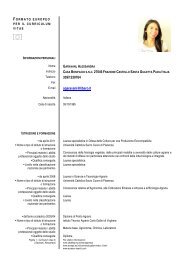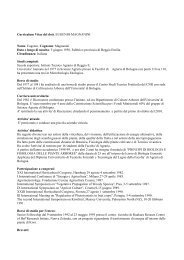REGULATION, FORMAL AND INFORMAL ... - ResearchGate
REGULATION, FORMAL AND INFORMAL ... - ResearchGate
REGULATION, FORMAL AND INFORMAL ... - ResearchGate
Create successful ePaper yourself
Turn your PDF publications into a flip-book with our unique Google optimized e-Paper software.
23<br />
The second important step in the liberalization process was the 1993 Banking Law, which<br />
ended the operational and maturity specialization of Italian banks and adopted universal<br />
banking. For our purposes the most important effect is that participation in the mortgage and<br />
consumer credit markets was extended to all banks, dramatically sharpening competition and<br />
increasing the supply of credit to households. This was made possible by massive privatization,<br />
which in a few years put half of the previously State-owned banking industry under private<br />
control, providing strong incentives for profit maximization. Table 4 summarizes the main<br />
features of the old regulations and of the deregulation process and illustrates the most important<br />
changes in the household loan market. The Appendix details the changes introduced by<br />
liberalization and its effects on household credit market, as a well as a number of features of<br />
household credit contracts in Italy compared to other countries. One noteworthy consequence of<br />
liberalization was the entry of foreign intermediaries specialized in mortgage and consumer<br />
credit, which increased competitive pressure and improved the “state of the art” of Italian banks<br />
in screening loan applicants and monitoring clients by use of advanced credit scoring techniques<br />
and warning systems. 10 As a consequence of increased competition credit to households has<br />
become more easily available and its cost has been drastically reduced. Now let us discuss the<br />
impact of financial liberalization on the rate of interest on household loans and on the<br />
availability of credit.<br />
Interest rates on loans. It takes time for financial liberalization to show its effects; this is because<br />
entry into new markets, either by opening new branches or by operating a new line of business,<br />
such as household mortgages, comes some time after the regulatory impediment has been<br />
removed. In fact, the effects of the liberalization on the household loan market are visible after<br />
the mid-1990s. Figure 11 shows the evolution of the interest rate on long-term household loans<br />
and its spread vis-à-vis the average interest rate on long-term bank funding (CDs and bonds).<br />
The nominal interest rate starts dropping after 1995, followed with a lag by the real rate. Over<br />
the three year-period 1997-2000 the real interest rate on long-term loans falls from about 8.5 to<br />
10 The use of credit scoring techniques for extending mortgages and consumer credit has spread greatly in<br />
recent years: at the end of 2002 in each Italian province there were, on average, 11 banks that relied upon credit<br />
scoring techniques, compared with just 5 in 1999. There is evidence that credit scoring techniques have a positive<br />
effect on the supply of loans in local credit markets. For instance, Bofondi and Lotti (2003) find those banks that<br />
use credit scoring techniques to screen applicants have increased their mortgage supply by more than other banks.


